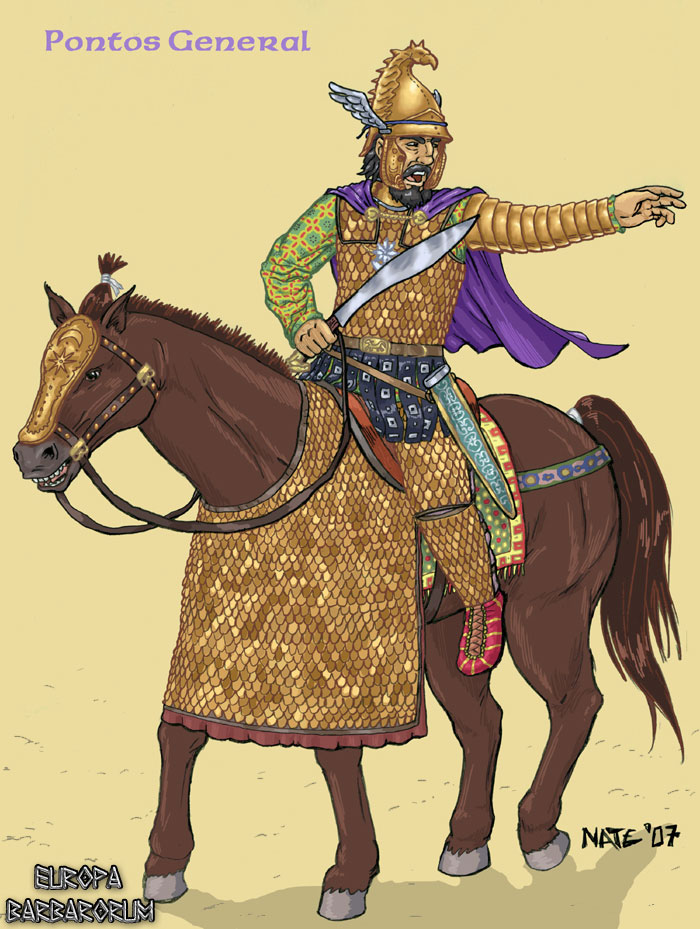Pontic General approx 270 BC

Phrygian Helmet: The highly decorated Phrygian helmet he wears is found on numerous coins depicting Pontic kings and Perseus, their mythical forebearer. It is a common Phrygian helmet with visor, but it has been richly adorned with a griffin at its peak, wings attached on the sides, and decorated cheek guards.
Throat-Guard: Tightly shaped around his neck and mentioned by Xenophon, the throat-guard was first used by the Persian cavalrymen in the 4th century.
Cheires: Comprised of overlapping bands of bronze, thus giving rise to the generic term "armor of bands", the Cheires was an arm defense used by late Achaemenian heavy cavalry in lieu of the more common shield. It was most likely developed by the Scythian tribes of the eastern steppe, and found its way into Achaemenid Persia through their many encounters with those nomadic people. It further became a quintessential part of the armor of heavy parthian cataphracts that were to dominate the eastern world, particularly in their wars against the Romans. Xenophon mentions them in the mid-fourth century as a recent development.
Bronze Scale Cuirass: Made from small, identical plates of varying materials, Scale is a common armor in the ancient East. The scales are usually rectangular and no more than about four inches in length (though most are smaller), they tend to have scalloped bottom edges and often have the appearance of fish-scales. They offer good protection, particularly against blunt trauma, and are quite easy to repair compared to maile or plate armor.
Thigh and Leg Armor: His leg armor is of bronze scale segments tied to a leather backing. Their construct is of a Scythian style, that leaves the knee exposed, but allows better mobility than full-length, scale "chaps". He also wears Hellenic pteryges as his cuirass does not extend below his waist like a bronze scale shirt would.
Machaira: He carries a more decorated version of the common cavalrymen sword, the machaira. It is an Hellenic weapon adopted by cavalrymen of different backgrounds and ethnicities across the Hellenistic world in the period of the successors.
Clothing: His garments are those of a Pontic nobleman of Persian ancestry, with Persian designs and colors.
|



